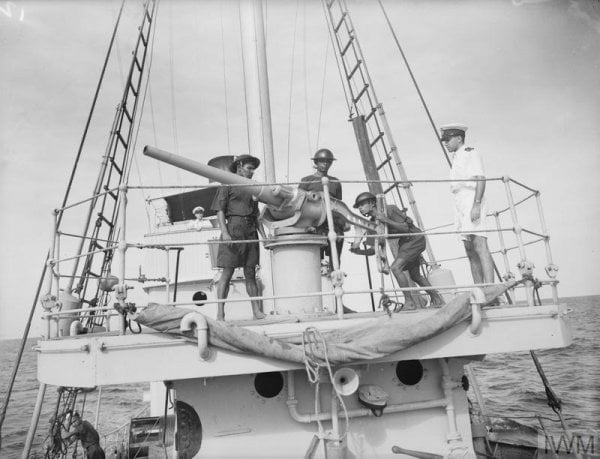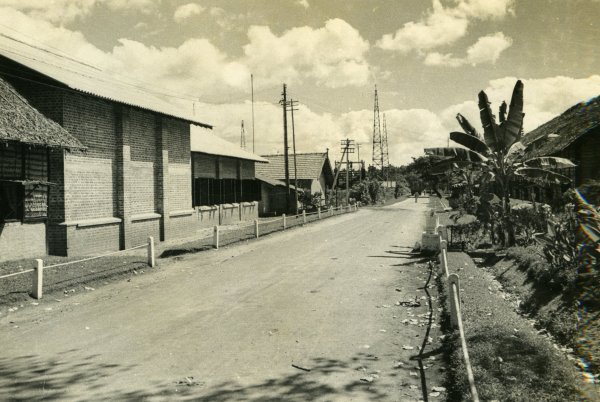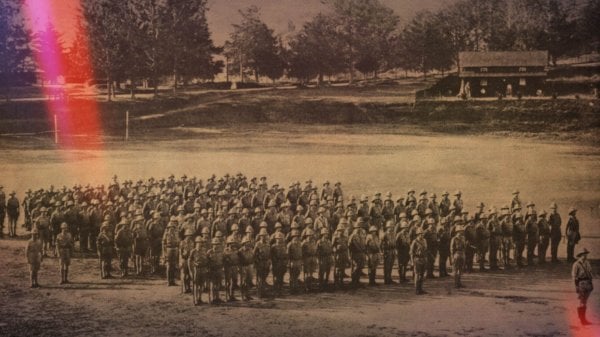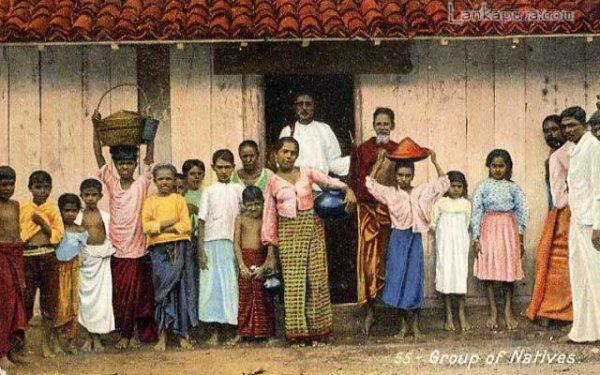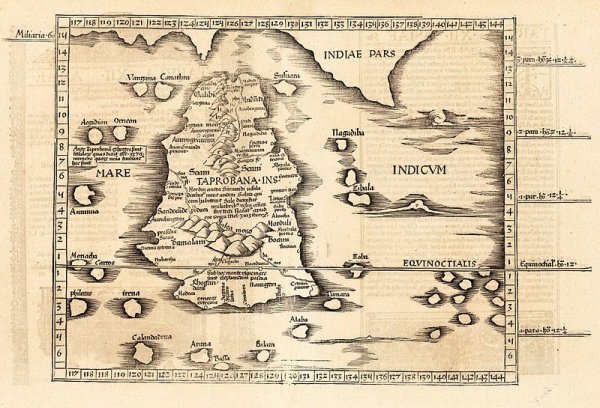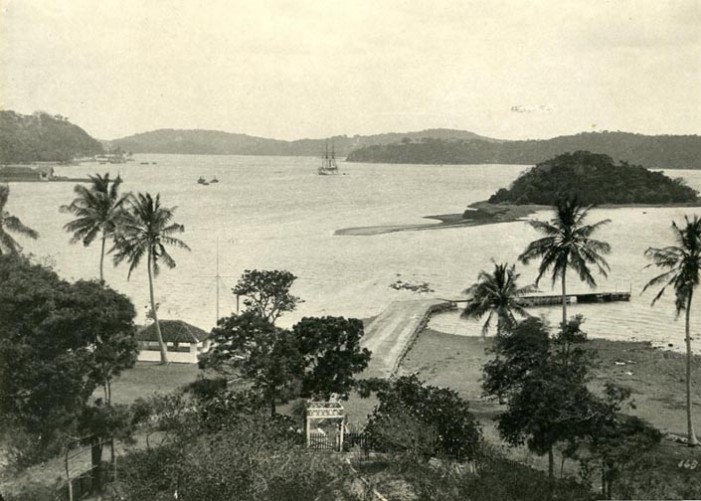
For centuries, the Trincomalee harbour has been significant to the political and socio-economic spheres of Sri Lanka. Because of its favourable geographic position, it is one of the most famous natural harbours in the world. The Portuguese, the Dutch and the British—as well as the ancient Sri Lankans—, recognised its value, as a harbour which could be used for significant economic and military activities in the east.
From Gokanna to Trincomalee
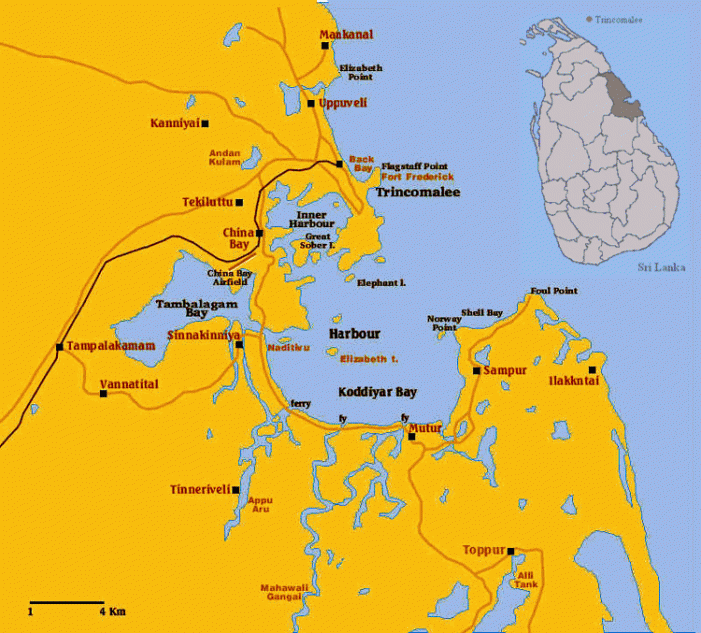
A closer look at the Trincomalee harbour. Image courtesy ariseawakeyuvabharat.blogspot.com
According to local and foreign historical accounts like the Culavamsa, Trincomalee harbour was known as gokanna thittha, and gonagamaka pattana. It was called so because of the harbour’s unique shape—the ancient Sri Lankans living in the area noticed that the land was in the shape of a bull’s ear, hence the name Gokanna. In the Pali and Sanskrit languages, the word go referred to bulls and other herbivorous, ruminant animals.
After the 12th century, Gokanna came under the control of the Arya Chakravarthi kings of Jaffna and was given a new name in Tamil—Thirukonamalai. In Tamil, the word thiru refers to the places of Hindu religious worship built on hills, while the words kona and malai refer to peak and mountain respectively.
In the book titled Historical Topography of Ancient and Medieval Ceylon, the writer C.W. Nicholas pointed out that the name Thirukonamalai was created by combining these three words together, and literally refers to the sacred range of hills in this region which are dotted with Hindu temples and shrines. Thirukonamalai eventually became the anglicized Trincomalee.
The economic importance of Gokanna

The Colombo harbour is the main commercial hub of present-day Sri Lanka, but the Trincomalee harbour is still valuable in economic, as well as naval, aspects. Image courtesy wikipedia.org
Since the 6th century B.C, Gokanna had functioned as a naval harbour. As Professor W. I. Siriweera, in his book History of Sri Lanka, stated that it began to function as a commercial port only after it was included in the trade routes of the East and West in the 7th century B.C.
Merchants arrived at the port from China, Ethiopia, Saudi Arabia, Greece, Rome, India, and Persia to trade horses, exotic perfumes, silk and expensive carpets in exchange for gems, turtle shells, ivory and elephants from local traders.
The availability of clean water and materials needed for the repair of the ships, and the fact that a large number of ships could be docked in the harbour at once, were some of the reasons why the Gokanna port appealed to foreign merchants. Historical accounts also mention that the port’s proximity to the mouth of the Mahaweli River allowed local merchants to journey to the port via the river, and trade with the Indian traders who frequently visited the port.
Today, the port is not as commercially important as it was in the past, as the Colombo harbour has superseded it as the most important commercial centre of modern Sri Lanka.
The historical importance of Gokanna
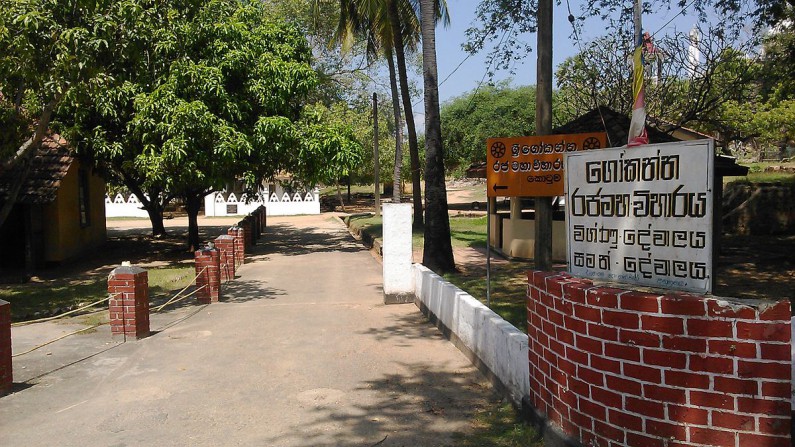
The Gokanna Viharaya was an ancient Buddhist temple located in Trincomalee, which was destroyed by the Portuguese in the 16th century. Image courtesy wikipedia.org
Aside from its economic importance, several historic incidents took place at the Gokanna port, making it historically important as well. Buddhist texts state that Lord Buddha, too, visited the port on his first journey to Sri Lanka in the 6th century B.C.
According to the Mahavamsa, King Vijaya’s successor, Prince Panduvasudeva landed with his followers at the Gokanna port when he migrated to Sri Lanka from India, with the Prince’s wife Princess Baddhakachchayana following suit.
In the 11th century A.D. when the Chola Empire invaded Sri Lanka, it was through the Gokanna port. They then extended their power from the Gokanna region to the Polonnaruwa kingdom. It was King Vijayabahu who restored Gokanna port as a commercial trade point after expelling the Chola invaders in the year 1070 A.D.
The country was once again under threat in the year 1215 A.D. due to the invasion of Kalinga Magha, who set up a fortress at Gokanna. It was King Parakramabahu I who redeemed the port from these invaders. Aside from these invasions, there were conflicts between the Sinhala kings and the Arya Chakravarthi kings of Jaffna over the ownership of the port.
Trincomalee harbour in the 20th century, and later

Trinco harbour after the Japanese attack in 1942. Image courtesy pinterest.com
From the 15th to the 20th centuries, when Gokanna port was under the Portuguese, the Dutch and the British, it functioned mainly as a naval base. When the British took control from the Dutch, the Gokanna port, too, came under their authority and was said to be one of the best ports under their control at the time.
William Pitt, the British Prime Minister during the early 19th century, had stated that Sri Lanka was the most valuable colony of the British—mainly because Gokanna port was large enough to host all the ships of the British naval fleet in the East. The Trincomalee harbour was most useful to the British during World War II—so much so that the Japanese actually attacked this harbour in 1942.
A few months ago, the Trincomalee port was brought back into the political spotlight because of the government’s plans to make a deal with India. India had proposed a joint venture with Sri Lanka, in handling 84 of the 101 oil storage tanks in Trincomalee. Of course, this proposed venture was met with opposition from the trade union of the Ceylon Petroleum Corporation (CPC), who fear that that the Indian Oil Company (IOC) will monopolise the fuel industry in the country. Nonetheless, discussions related to the proposed Economic and Technical Cooperation Agreement (ETCA) between Sri Lanka and India are still underway, and if the agreement is settled on, India will take initiatives to develop the Trincomalee harbour. The port may not be as commercially important as it was in the past—but even in today’s political climate, the significance of the port cannot be denied.
*Research by Lasantha Kularatna
Featured image courtesy imagesofceylon.com

